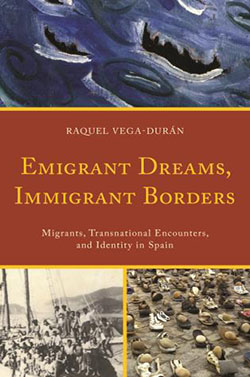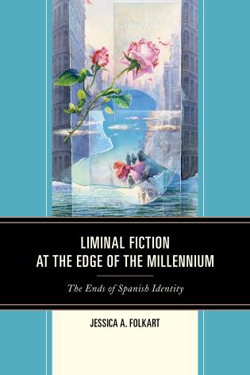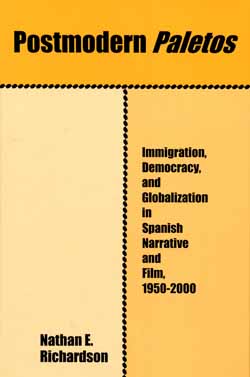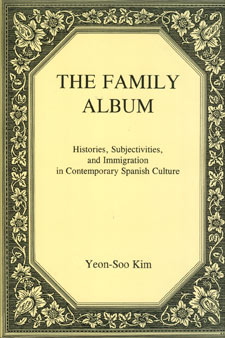Bucknell University Press publishes books of global interest in literary and cultural studies, many of which center the topics of immigration and migration within and to the Americas and the Iberian world. As immigration systems increasingly come under pressure and Draconian federal measures complicate and worsen displacement cause by climate change and state-sponsored violence, we offer an historic round-up of books that may aid in understanding the compounding human impact and cultural costs of immigration.
Black California Gold, by Wendy M. Thompson
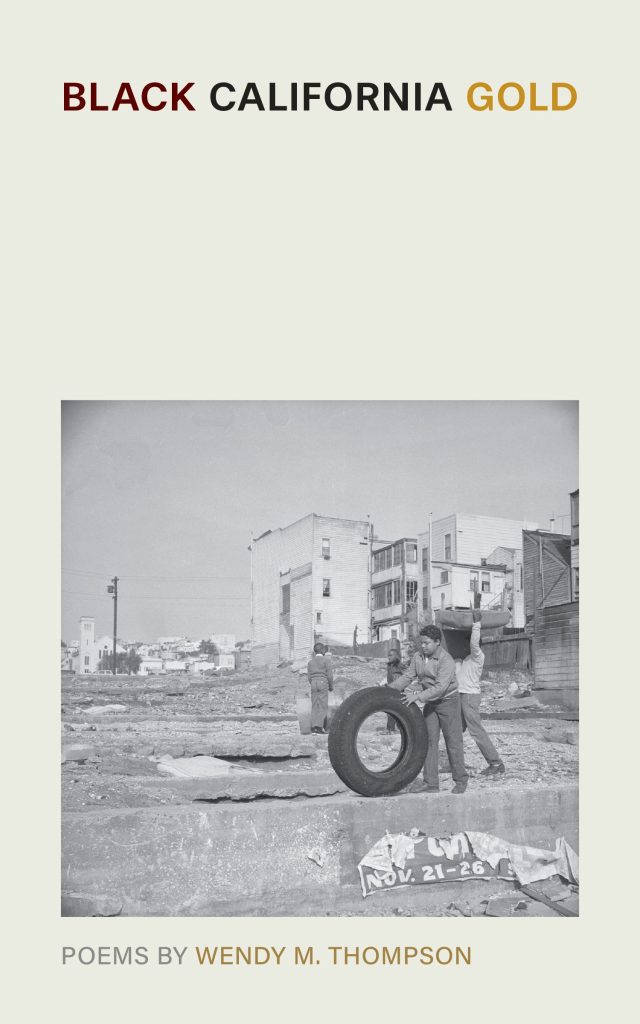
For numerous migrants who ventured westward in the twentieth century in search of greater opportunities, the glitter of California often proved to be mere fool’s gold—promising easy riches but frequently resulting in dispossession and displacement. Poet Wendy M. Thompson is descended from two of these migrant waves—post-1965 Chinese immigrants and Black southerners of the Second Great Migration—whose presence has permanently transformed the region.
In this arresting debut poetry collection, Wendy M. Thompson traces the past and present of California’s Bay Area, exploring themes of family, migration, girlhood, and identity against a backdrop of urban redevelopment, advanced gentrification, and the erasure of Black communities. Traveling down both familiar highways and obscure side streets, her poems map a region where race, class, and language are just some of the fault lines that divide communities and produce periodic tremors of violence and resistance.
Confronting assimilationist myths of the American Dream, Black California Gold depicts a setting that subjects different ethnic groups to searing trials and extreme pressures that threaten to break them down entirely. Yet, it also celebrates the residents of the Bay Area who have struggled to sustain home and hope amid increasingly desperate conditions.
Confluence Narratives: Ethnicity, History, and Nation-Making in the Americas, by Antonio Luciano de Andrade Tosta
Confluence Narratives: Ethnicity, History and Nation-Making in the Americas examines how contemporary historical novels from across the Americas use themes of immigration, ethnicity, and cultural encounter to challenge and reshape national identities. Focusing on works from Brazil, Argentina, Mexico, the U.S., and Canada, Luciano Tosta identifies a literary genre that connects the hemisphere through shared experiences of colonization, slavery, and especially immigration. Through case studies of Amerindian, Afro-descendant, Jewish American, and Japanese American communities, the book explores how narratives of movement, displacement, and deterritorialization reveal the enduring impact of migration on the construction of modern nations. Informed by postcolonial and transnational theory, this study highlights the inherently transcultural nature of American identity and literature.
Emigrant Dreams, Immigrant Borders: Migrants, Transnational Encounters, and Identity in Spain, by Raquel Vega-Durán
Emigrant Dreams, Immigrant Borders: Migrants, Transnational Encounters, and Identity in Spain examines how immigration has transformed Spain’s cultural identity. In recent decades, Spain has shifted from a nation of emigrants to a major destination for migrants, particularly from Latin America and Africa. In 2016, immigrants comprised nearly 12% of the population, a change that has reshaped national narratives and made migrant experiences increasingly visible in literature, film, media, and art.
Vega-Durán follows the migrant journey—from departure, through perilous border crossings at Ceuta, Melilla, and the Strait of Gibraltar, to the complexities of life in Spain—to show how immigration is central to understanding modern Spanish culture. Each chapter focuses on a stage of this journey, analyzing cultural responses that reflect Spain’s evolving self-conception as a nation in flux.
Placing Spain within broader Mediterranean and Transatlantic contexts, the book argues that immigration is not a marginal topic but foundational to the country’s contemporary identity. Through a wide array of cultural texts, Vega-Durán reveals how Spain is becoming a space defined not by a unified national self, but by its encounters with migrants and its ongoing negotiation of difference.
Liminal Fiction at the Edge of the Millennium: The Ends of Spanish Identity, by Jessica Folkart
Liminal Fiction at the Edge of the Millennium: The Ends of Spanish Identity explores how contemporary Spanish literature grapples with identity in flux—identity shaped at the thresholds of otherness in response to cultural, social, and demographic shifts. Focusing on liminality as both a narrative structure and a mode of self-understanding, the book examines how fiction reflects Spain’s evolving national identity amid debates over historical memory, gender, religion, nationalism, and immigration.
Immigration obviously plays a key role in this reimagining of identity. In this study Folkart shows how encounters with migrants and the multicultural realities of contemporary Spain complicate traditional notions of belonging and nationhood. Through works by authors such as Najat El Hachmi, Cristina Fernández Cubas, Javier Marías, Rosa Montero, and Manuel Rivas, Liminal Fiction analyzes how endings in fiction—far from offering closure—become liminal spaces that blur boundaries between self and other, inside and outside, native and foreign.
Postmodern Paletos: Immigration, Democracy, and Globalization in Spanish Narrative and Film, 1950-2000, by Nathan E. Richardson
When Spanish dictator Francisco Franco legalized internal immigration in 1947 he unwittingly inaugurated the greatest period of urban expansion and rural de-population that Spain had known. During the next two decades, nearly four million citizens would move from Spain’s traditional pueblos perdidos to overburdened urban metropolises. Along with wooden trunks and baskets of chickens, the immigrants (or paletos, as they were often called) bore on their journey the weight of centuries of ideological meaning tied to the geographic regions they were traversing. To abandon rural Spain had come to signify a rejection of manhood, wealth, Christian values, and even Spanishness itself. Paletos, however innocent they may have appeared, were not ideologically neutral. In the coming decades the weight and complexity of the meanings behind immigration, the country, and the city would only grow as Spain advanced from economic underdevelopment and political reaction to full-fledged participation in global economics and politics, activities that would reshape what it meant to be an immigrant and paleto both within and across the geographic border that had traditionally defined the Spanish nation.
The Family Album: Histories, Subjectivities, and Immigration in Contemporary Spanish Culture, by Yeon-Soo Kim
This study is an examination of the use of the family album in contemporary Spanish culture. Through the analysis of films, narratives, painting, and a photographic exhibition produced from the end of Franco’s dictatorship to the present, Kim interrogates how the family album serves as a critical instrument to reflect on the treatment of the past in contemporary Spain, the recuperation of repressed identities, nostalgia for collective memory symptomatic of the cultural discontent with the erosion of a national boundary due to globalization and the increasing claim of diversity, and ethical concerns for immigration. This study explores a broad range of works by canonical as well as less studied writers and artists, including Juan Goytisolo, Carlos Saura, and Marta Balletbò-Coll.
For more information about these books or to order, visit Bucknell University Press.

